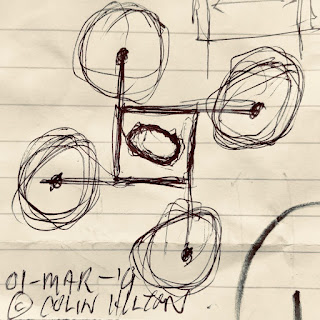There's a dearth of propellers out there for personal air vehicles (PAVs)... but before I begin, a word on the TELEDRONE philosophy. I call similar ventures in the UK and they are either extremely cagey or else don't respond at all.
I'd like to think this is because they consider me crazy, but sadly I suspect that they feel they are giving away precious trade secrets.
They're not. They're just slowing down universal adoption of world-changing technology by navel-gazing and mistrust. And neither of those get results.
Therefore yes, I file intellectual property but no, what I do is neither state-secret nor rocket-science and therefore I shall be sharing as much as I possibly can with you. Not least kits to build your own flying machine, and sooner rather than later.
There is not too much out there on WHY there are no blades for large drones, but as good an explanation of why lies here:
Stick with it as it gets more understandable, though easier still is to read my summary here because I'm the dummy who put the dummy into aerodynamics for dummies.
Firstly then, as I always wondered why the blades look more like airscrews and less like rotor blades off helicopters, it turns out that much of it has to do with the fact that drones are steered by rapid changes in rotor RPM while for helicopters this is anathema.
Secondly the best-known firm addressing this market is T-Motor in China, whose products I shall likely be using sooner rather than later.
Thirdly, rotors are broadly three times less efficient than fixed wings of the same profile that generate lift from forward flight, and...
Fourthly, this efficiency can be recovered somewhat by larger rotors, for which the TELEDRONE was designed from the outset ~ we surf with the flow of aerodynamics.
Accordingly I shall likely plump for their (largest or) 10 kilowatt motor driving their (largest or) 40-inch propeller.
It's on a par with the Turnigy 150, but I like where the founder of T-Motor came from, and where he's headed.
And investors look at that sort of thing.



























